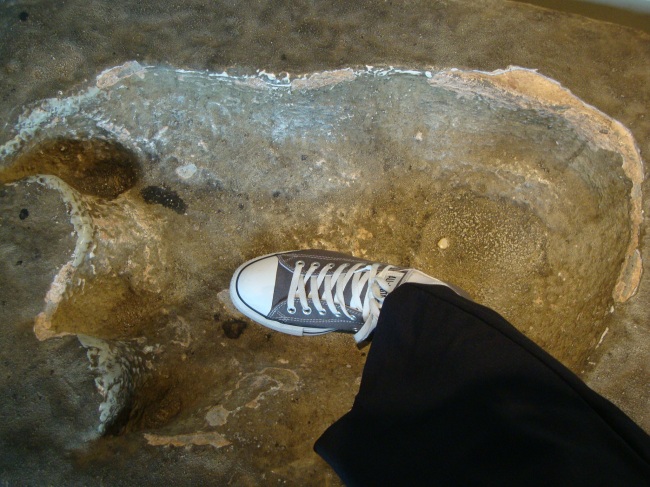
PNC BANK COLONIZES GRANT PARK CHICAGO (5.26.14)
nan turpin photographs
The country we like to call God Bless America had just lost 0-1 to Germany in soccer/football. All the Old Glory clothing in Grant Park (for the jumbotronning of the match) was at half-mast. Soccer fans momentarily stopped drinking free cups of something from unmarked cans handed to them by strangers outside the fenced viewing area. A somber cloud drifted over Grant Park.
The walk home through Chicago’s central beaux arts park was a way to make sense of loss. A walk in the park can be a good thing when we want to make sense of life.
This walk reminded your Primary Source reporter that PNC Bank’s money shack was still there after all these weeks, blocking the little pedestrian bridge that leads weary citizens from Michigan Avenue into the cool relief of their park.
Money and banks are symbolic and a good symbol gets better if it also physically blocks an architectural perspective. PNC gives us The bank saying “In Your Face Chicago.” Thank you, PNC.
To re-cap this particular walk in the park, your reporter went from
1)a tightly securitized big screen world cup viewing area around the Petrillo Bandshel (tarp-covered chain link fence, confiscated water bottles on a very hot day and no visible water distribution or sale within the area of confinement)…
2) past the grant Buckingham Fountain area that was similarly fenced with private event tents in it
To walk through and out of Grant Park
3) around the PNC Bank Money Shack at the end of the footbridge to Michigan Avenue and next to the Summer Dance space.

The “public space” of a “public” park is less and less public and the space more and more privatized.
To be fair, PNC has given Chicagoans a month-long treat of their banking shanty, perhaps its own homage to the Great Depression of the 1930s that turned so many city parks and neighborhoods into shantytowns.
Yesterday Primary Source was delighted to find an actual PNC employee in the shack with his colleague. He was a loyal company man and did his best to defend his employer’s excellent products.
The company man had more difficulty with basic questions like this one, “Why on earth would someone simply want to enjoy the park on a summer’s day? Why wouldn’t they prefer to do their banking in there?”
Two good things about the PNC shanty bank:
1) They’ll be gone on Monday-off to spend the rest of the summer on North Avenue Beach – surf’s up, rate’s up! Northsiders be warned.
2) The shanty has riled up the neighborhood around the Grant Park PNC bank shack. At least one Michigan Avenue activist has gotten lame duck aldermanic staff promise to look into it. South Loop Chicago treasure, reporter-blogger Bonnie McGrath, identified community outrage at the shack in the beaux arts park in her June 20th column (Dearborn Express).
Oh, and here’s a third good thing:
3) This just reminds us -in the teeth of a biting “recession” the banking industry had so much to do with – that banks are what they always have been. PNC Bank’s ill-considered “public relations” stunt is the pure shack proof of that.
If they didn’t think through public reaction, it might it be because they don’t think they have to. After all, who’s got the money? They do.




























